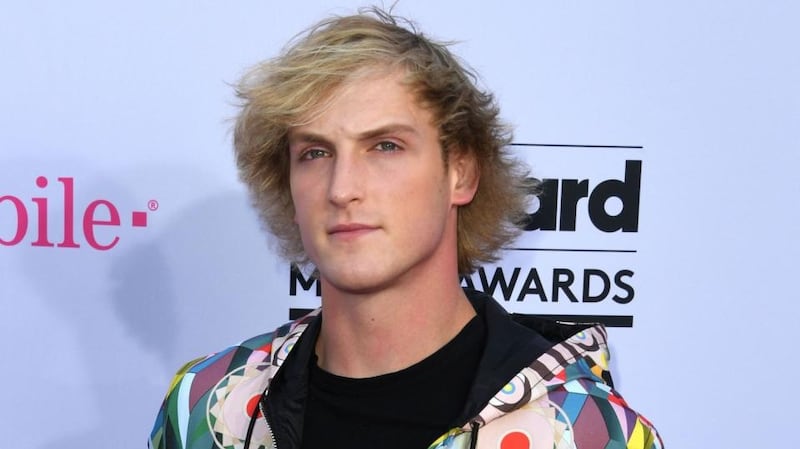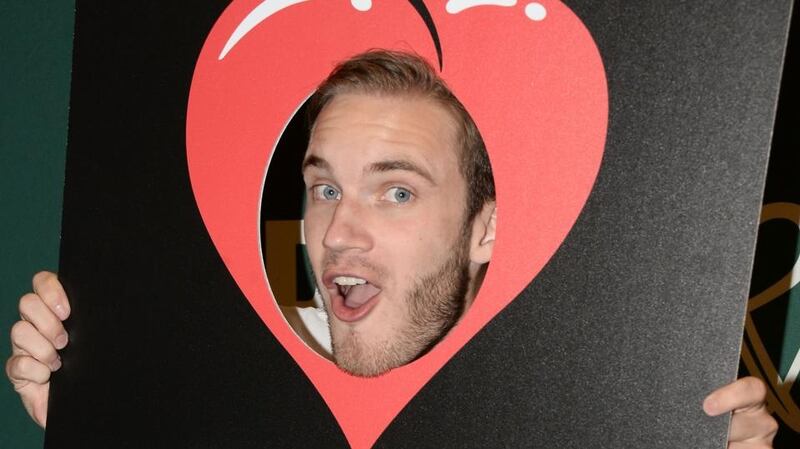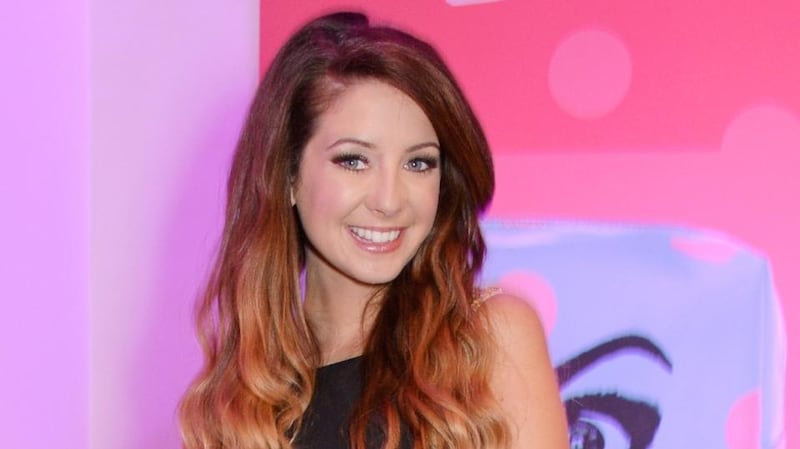On December 31st, YouTube celebrity Logan Paul posted a video to his hugely popular channel from a trip to the Aokigahara forest in japan. Also known as the Suicide Forest, it was where the 22-year-old YouTuber came across the body of a recently deceased person. Paul decided to post footage of this disturbing scene ("Bro, did we just find a dead person?"), subsequently racking up 6.3 million views in 24 hours before he removed it.
Despite outrage from fans and other social-media users, it took YouTube a further nine days to issue a statement about the actions of one of the platform’s biggest earners (Paul earned an estimated $12.5 million in 2017).
“We’ll have more to share soon on steps we’re taking to ensure a video like this is never circulated again,” said YouTube. Paul’s ‘punishment’ has been to have his channel removed from the preferred ad partners list while his YouTube collaborations have been put on hold.

By way of apology, the YouTuber showed remorse but ultimately made it about himself ("This is a first for me") before signing off with his hashtag #Logang4Life, a reference to his fan base, the Logang. Because apologies should always include branding.
Racist remarks
Last year, Swedish gamer and YouTuber PewDiePie came under fire for making racist remarks in his videos. But his channel has received almost 17 billion video views, making it the most viewed YouTube channel ever. He was even named as one of the world's 100 most influential people by Time magazine in 2016.
On the far end of the YouTubers-behaving-badly scale is English fashion and beauty vlogger Zoella, or Zoe Sugg. With more than 12 million subscribers, the 27-year-old rose to fame by showing off her budget-friendly hauls from Primark (Penneys to you and me), allowing fans to copy her affordable fashion sensibilities.
So, what do we want from these young content creators? Often, nothing more than building them up so the teardown is all the more delicious.
By way of extending her own brand she launched an Advent calendar for Christmas 2017. Selling in Boots for £50, this pricey present was criticised for containing only 12 days’ worth of products, including arguably stingy items: a keyring, a candle, some stickers and confetti. Her fans might have done better at Primark.
While most YouTubers are relatively benign, one wonders: how did we end up creating these fame-and-fortune-at-all-costs monsters? Or co-creating, as Dr James Cronin, researcher in consumer culture theory at Lancaster University, says, explaining that fans have a lot of say in how these YouTube celebrities present themselves.
Cronin, alongside fellow Lancaster University researcher Dr Hayley Cocker, wrote a paper on the subject – Charismatic Authority and the YouTuber: Unpacking the New Cults of Personality – in which they explore the relationship between these successful content creators and their audience.
Microcelebrities
They argue that what we are seeing is new cults of personality: millennials like to idolise these “microcelebrities” who, more often than not, are young ordinary people just like them and they have a stake in their rise and fall.
“It is joint control; the YouTuber has to listen to their fans. On television, celebrity is just monological: you watch it or turn it off. But you see on YouTube, in the comments, people will regularly give feedback like ‘I don’t like your jumper’ or ‘I hate that you don’t start the video with this greeting anymore.’”

And YouTubers take these comments on board. Fan response videos are part of the package and expected. Their success hinges a lot on responding to their audience, says Cronin. So the YouTuber is an item of co-creation. Whereas celebrities of the past, such as Elvis Presley or Marilyn Monroe, propelled themselves to fame with the help of technocrats ie influential industry insiders such as music or movie producers, the digitally native celebrity relies on the audience to not only bring them to prominence but also, in part, shape their persona. It’s a bit like a puppet being controlled by thousands, if not millions, of strings.
“You almost have the YouTuber being owned, or a hyper version of ownership. With that you also have fans constructing their own public personalities,” says Cronin, referring to the fleeting fame that can come from clever or funny comments beneath the video.
“There is a lot of regulation going on and the YouTuber personality is always under development based on feedback,” he says, explaining the paradox between fans loving the ‘natural’ or ‘honest’ style of these vloggers who are constantly tweaking their content and projecting an image based on what might appeal to their fan base.
Cronin describes a recent incident where a British YouTuber couple did a meet and greet for their young fans in London: "There is a video of the YouTubers sitting in a car, filming their arrival, and being stormed by fans. It's like something out of The Walking Dead."
“In their response video they asked fans to please not bang on the windows. In the comments it was clear that some fans got it but others almost felt ‘Why shouldn’t we? You’re ours.’”
So, what do we want from these young content creators? Often, nothing more than building them up so the teardown is all the more delicious. Earlier this week, "Milkshake Duck" was announced as Australia's Macquarie Dictionary word of the year for 2017. This neologism was coined to capture the moment when something undesirable or distasteful is unearthed about a hitherto much-loved viral internet sensation.
Andy Warhol famously predicted that "in the future, everyone will be world-famous for 15 minutes" and he didn't even see YouTubers coming, much less the creeping shadow of Milkshake Duck. It turns out there may be an expiry date for the instafamous.
Chewbacca Mom's viral video of a stay-at-home mom laughing uncontrollably while wearing a Chewbacca mask was an overnight sensation but when she began charging $20 a pop for autographs and vlogging her opinions on shootings in the United States the tide turned.
"I've never seen anyone as ready for fame as Chewbacca Mom," said writer and commentator Roxanne Gay. As one Twitter user put it: "Dear Chewbacca mom, it was 15 minutes of fame, not 15 weeks. Please vacate premises. Thank you, The Internet."
Logan Paul was put under further scrutiny and it was decided that plenty of his previous vlogs were of questionable taste including an event where he was launching his line of socks: he thought it would be fun to fake his own murder but the Logang watching included some kids under the age of 16 who maybe shouldn’t have seen the splashy bloodfest.
But his missteps are also taken as evidence of how natural, uncensored and authentic he and other YouTubers are. Part of PewDiePie’s appeal is the stream of expletives that emerge as he excitedly plays through another game. This is real, raw emotion. A tonic for those sick of Hollywood slick. Or is it?
Socially constructed
“These vlogs are edited and socially constructed. The YouTuber is very aware they are being watched. This is the version of them that they choose to put out there.”
Their personal qualities are judged, endorsed or rejected by the audience, explains Cronin. The resulting persona is what we see. A carefully curated version of reality that must evolve to meet continuing approval, clicks and (often monetised) views.
“Sociologist Stjepan Meštrovic says we are living in what he calls ‘postemotional society’: we have moved into a society where everything is watched and we make a spectacle out of emotion. It is emotion as a commodity,” says Cronin.

This is a world where Big Brother has paved the way for YouTubers, viral videos and being internet famous. Reality television and YouTube ostensibly show us real people with real emotions but perhaps we only want this kind of reality as long as it continues to hold up a distorted, Photoshopped image rather than a mirror to society.
Naturally, this makes one think of Charlie Brooker's Black Mirror, especially the first episode of last year's season three in which Bryce Dallas Howard's character will do anything for better social-media ratings. The scene where she prepares a delicious-looking dinner only to snap an image and post it online before throwing it away says it all. It doesn't matter that she ate it, only that she appeared to enjoy it.
Perhaps these disruptive, authentic, alternative content makers on YouTube are selling us the same old glittering baubles of fame, just served up via newer technologies. The difference is we think we’re pulling the strings that count.











